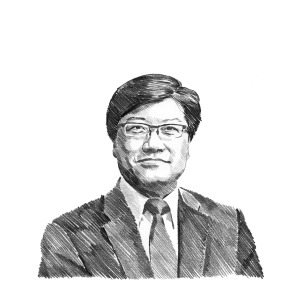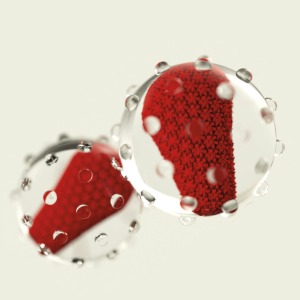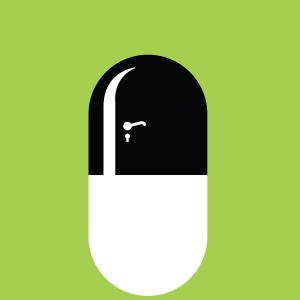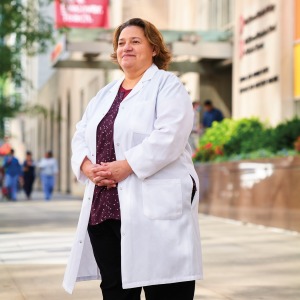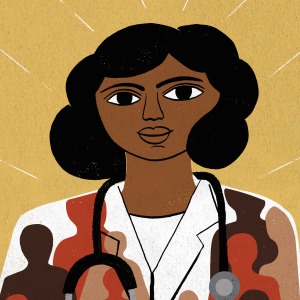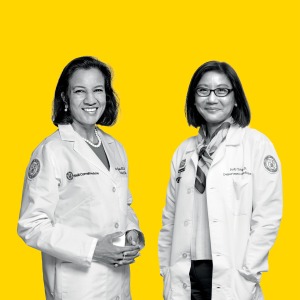Come January, Xavier, who has HIV, plans to stop taking his daily medication — a pill that suppresses the deadly virus so effectively that standard tests cannot detect it in his blood.
“I’m nervous, hesitant, but at the same time, I’m curious to see the result,” says Xavier, who uses a pseudonym to protect his privacy.
If someone with HIV stops taking medication, the result is usually a foregone conclusion, and an alarming one. The virus that such pills suppress would return, bringing with it the specter of AIDS, a fatal condition in which a damaged immune system can no longer protect the body.
Four decades ago, an HIV infection was often a death sentence. Since then, advancements in medications known as antiretrovirals — regimens demonstrated in part by faculty now at Weill Cornell Medicine — have turned the fatal illness into a chronic but manageable condition.
Xavier, however, has a shot at keeping HIV at bay, even without his antiretroviral pill. In July, while continuing to take the medication, he received an IV infusion and began a series of injections, delivering an experimental treatment intended to subdue the virus for the long term, perhaps even permanently.
Early in 2023, as part of the procedure being tested in this clinical trial, he will stop his regular medication, and researchers will closely monitor his blood for evidence of the virus.
The strategy behind this trial draws inspiration from rare cases in which the human immune system fights off HIV all on its own. Known as “elite controllers,” these people can manage the infection without medication, pushing the virus to undetectable levels, perhaps even eradicating it entirely.
Through years of research, Dr. Brad Jones, associate professor of immunology in medicine at Weill Cornell Medicine, and his colleagues have developed an approach they hope will empower the typical immune system to perform more like an exceptional one when pitted against HIV. Xavier is among the patients who are volunteering to test it.
“I want it to be successful. That’s for sure,” he says of the experimental treatment. But after a lifetime of hearing HIV described as uncurable, he’s still “trying to wrap my brain around” the prospect of a cure.
“Possibly cured”
Science has driven tremendous progress in treating HIV. However, physicians still have no way to cure these infections. Researchers at Weill Cornell Medicine are among those leading the search for one. Some of their efforts, like the immune-augmenting approach that Xavier has volunteered to try, have advanced enough that they are being tested in people. Meanwhile, in more preliminary work, investigators are hunting for HIV’s hiding places within the body and for clues within the remnants of ancient human infections, all in the hopes of gaining crucial leverage against this invader.
Success can feel paradoxically close, yet distant. Since 2009, scientists appear to have cured a small handful of people. In five cases, leukemia or lymphoma patients with HIV have received dramatic treatments to resolve both conditions.
HIV and these cancers overlap in a crucial way: They attack blood cells or the blood-cell forming system. So, researchers decided to try treating both simultaneously by wiping out and replacing this system, either with new stem cells or bone marrow from a donor. All the successful transplants introduced a rare, natural genetic variation known as CCR5Δ32 that denies HIV entry into the white blood cells it likes to infect, rendering them impervious to any virus that remains.
In one of these cases, a woman who received a stem cell transplant at Weill Cornell Medicine has remained virus-free — without medication — for approximately two years. She is now considered “possibly cured,” according to Dr. Marshall Glesby, associate chief of the Division of Infectious Diseases at Weill Cornell Medicine, who is among the doctors caring for her. “There’s no clear definition of when you can say someone has been cured, but it’s looking very promising,” he says.
Regardless of how carefully researchers describe outcomes like hers, the same result remains out of reach for the vast majority of people living with HIV. Stem cell and bone marrow transplants entail a risk of dangerous complications, even death, that far exceeds the possible side effects of medications that can control HIV.
To cure everyone else, researchers need another approach, and they are exploring numerous possibilities.
“There’s a lot of work to be done. This is not something that’s going to happen six months from now,” Dr. Glesby says. Even so, he is cautiously optimistic. “Having the privilege of being a part of this woman’s journey, however, does give me hope.”


